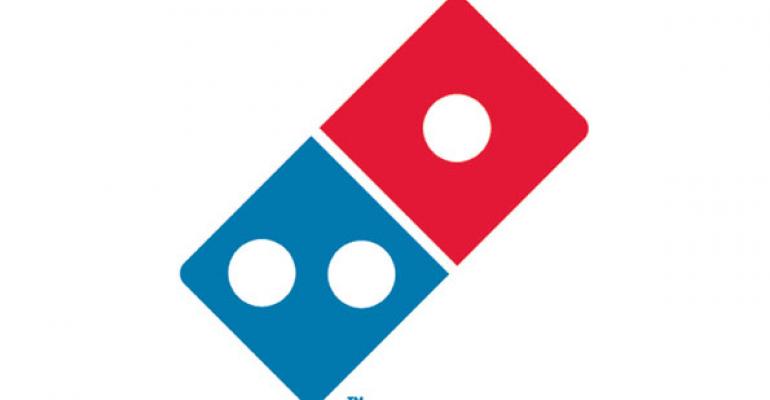Domino’s Pizza officials said the brand would continue to manage through commodity pressures by carrying on the momentum it achieved during the first quarter and avoiding an increase in menu prices.
Ann Arbor, Mich.-based Domino’s grew its net income 17.7 percent during the quarter ended March 23, and same-store sales rose 4.9 percent at domestic units and 7.4 percent at international units during the period.
However, the company’s total cost of sales inched up 0.9 percent, mostly due to rising costs of cheese and pork, but officials added that they expect commodity inflation to taper late in the second quarter or by the third quarter.
RELATED
• Domino's Pizza 1Q profit rises 17.7%
• Domino’s Pizza same-store sales fuel growth in 2013
• More restaurant commodities news
“I commend our franchisees,” chief executive Patrick Doyle said during the nearly 11,000-unit chain’s earnings call. “They’ve been remarkably disciplined in recognizing that this is a relatively short-term thing, and they’re taking some of that [hit] in the first quarter. … The volume that we saw in the quarter carried the day, and they understand that sales growth and keeping the customer base happy and loyal is what drives our profitability and growth in the business.”
Doyle said Domino’s Pizza’s ability to grow sales and open more units domestically and internationally, upgrades to restaurants and the menu, and more initiatives around digital ordering would mitigate commodity pressure until food costs normalize and keep the chain from increasing prices.
In addition, the chain’s current national promotion is for Specialty Chicken, which makes use of a protein with a favorable food cost and ingredients already on hand, Doyle noted.
“Right now, given the way commodities have been moving, the fact that we have a chicken-focused promotion is a good thing and nicely timed,” he said.
When discussing the competition nationwide among bigger competitors like Pizza Hut and Papa John’s, Doyle noted that value remains top of mind for consumers, which is why Domino’s would manage its profitability in every way possible, short of increasing menu prices, to offset commodity inflation.
Chief financial officer Mike Lawton added that most transactions for Domino’s have some kind of deal associated with them, yet Domino’s average check still increased slightly in the last quarter, which he said is about “being sharp on the coupons you offer.”
“There is more opportunity to be careful with your couponing than there is to take price at this point in time,” Lawton said. As long as commodity prices eventually drop, as expected, he said, “I don’t think there will be an adjustment [in Domino’s menu prices].”
Domino’s also has an easier time managing through a high-food-cost environment like this one than do independent pizzerias or smaller regional chains, Doyle said.
“We think our size and scale and ability to buy effectively and pass savings through to our stores is an advantage,” he noted. “It does put us in a stronger position from a market-share standpoint.”
Scale would also remain an advantage over new fast-casual brands trying to establish a new pizza segment, he added. But rather than rely solely on its size to fend off fast-casual pizza chains, Doyle said, Domino’s would continue with several previously disclosed initiatives, such as its systemwide remodeling program and menu innovation around higher quality.
Doyle noted that Domino’s continued growth and investment in digital ordering, which now accounts for about 45 percent of sales, has helped keep the average ticket elevated because customers remain more satisfied from online and mobile ordering. The chain recently added Google Wallet functionality to its Android app and released an ordering app for the iPad.
But even though customers who order digitally tend to use coupons less frequently and tend to order more add-ons, “that’s a fairly small effect” compared with how Domino’s manages its coupons and value offers, Doyle said.
“We look at three buckets of orders: at full menu price, on a national offer and on local coupons,” he said. “We can manage our pricing in each of those areas. Overall, there is some effect with digital that has been positive for average ticket over time. But in each area, we think of what’s going to drive volume and then we manage our profitability within it.”
That has been Domino’s approach for about four or five years, he added, and it likely would not change soon.
“As long as that’s what [customers are] looking for, and as long as we’re continuing to drive growth in our franchisees’ profitability — and we did that again in 2013 — then we’re going to be consistent in our approach to pricing,” Doyle said.
Domino’s operates 376 restaurants and franchises another 4,615 locations in the United States, and it franchises another 5,997 units in 70 international markets.
Contact Mark Brandau at [email protected].
Follow him on Twitter: @Mark_from_NRN





